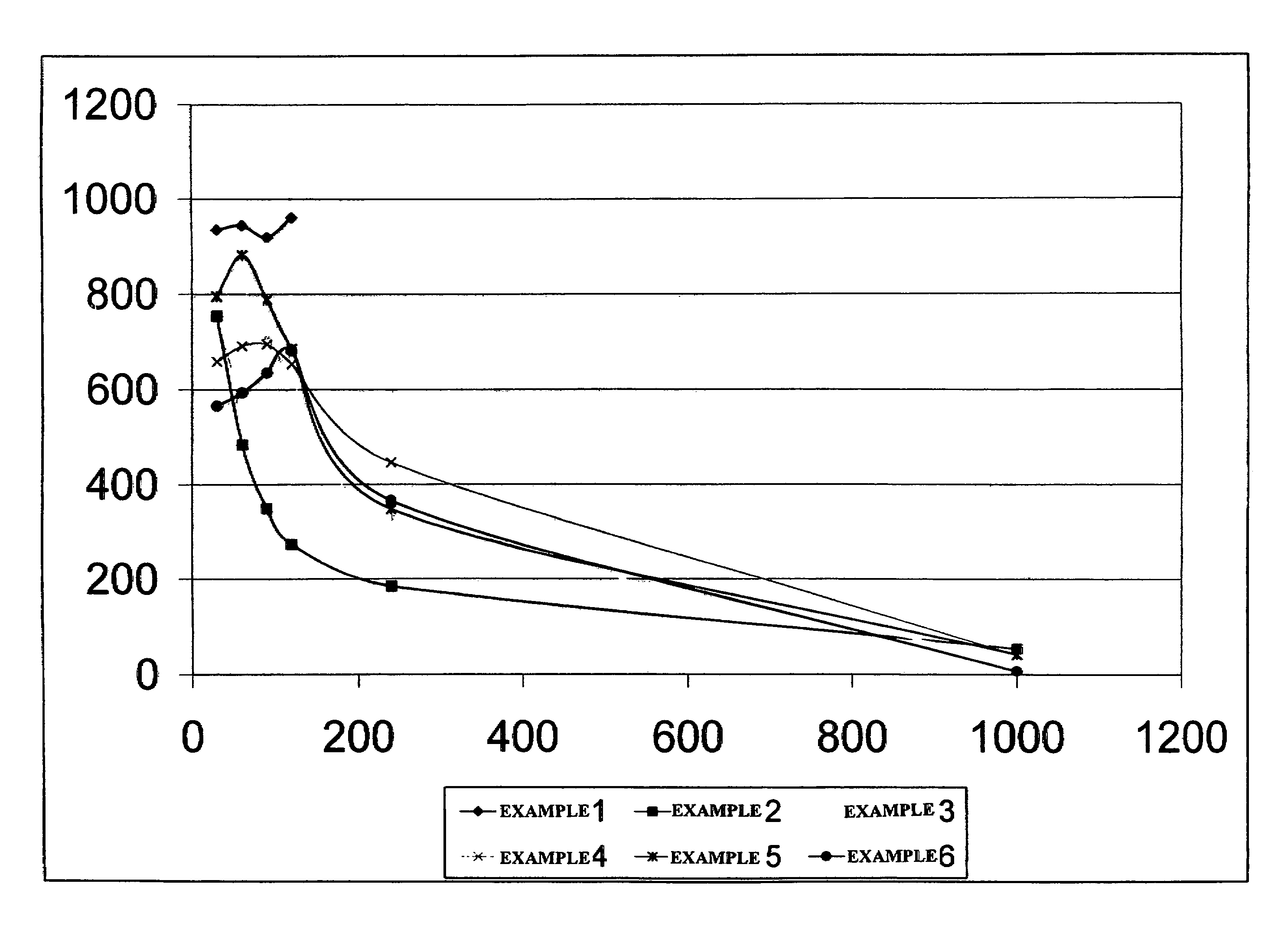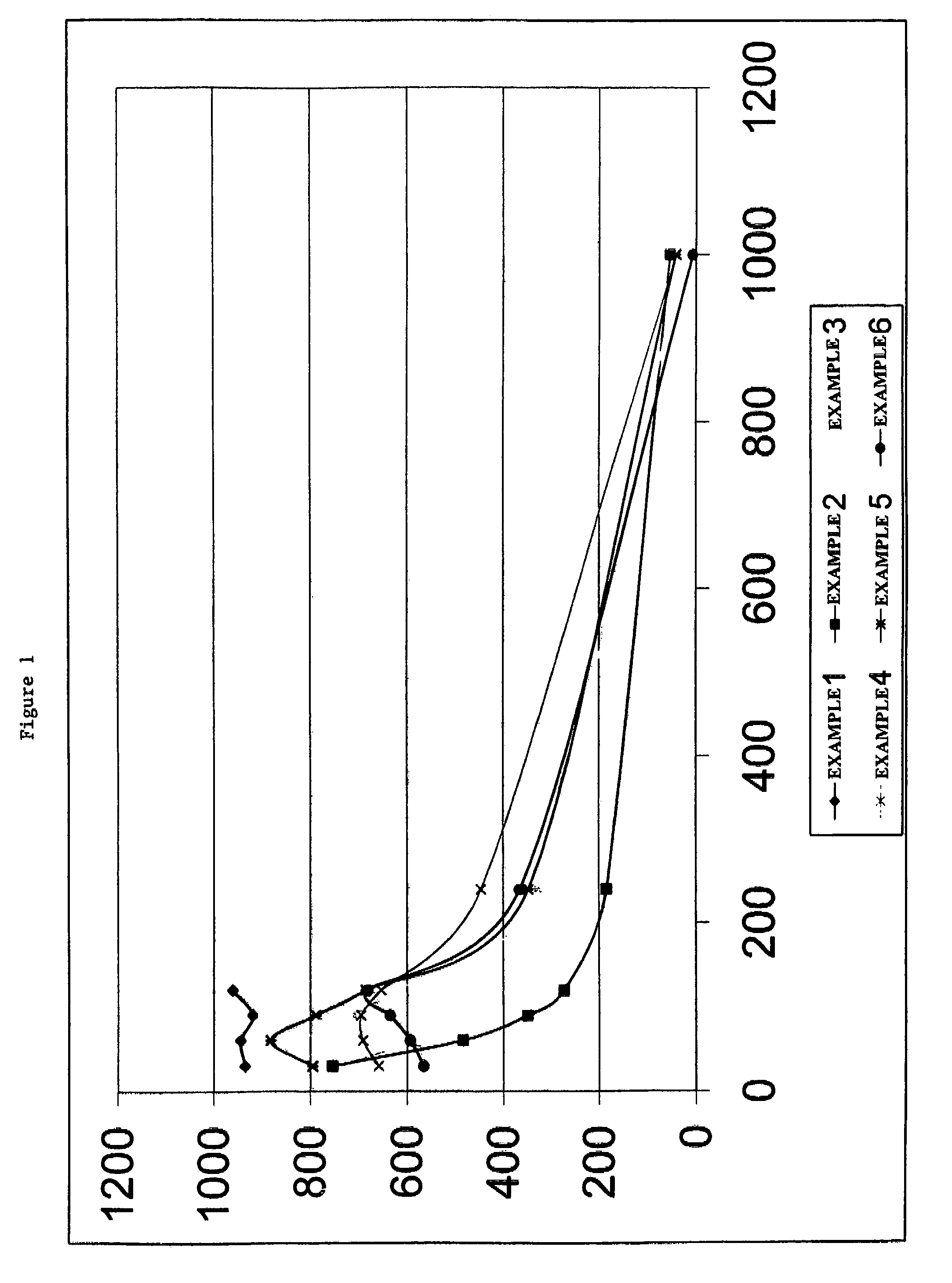Well treatment fluid compositions and methods for their use
a technology of subterranean formations and compositions, applied in the direction of fluid removal, well accessories, chemistry apparatus and processes, etc., can solve the problems of high fluid viscosity, high viscosity, and inability to fully reduce the viscosity of fluids
- Summary
- Abstract
- Description
- Claims
- Application Information
AI Technical Summary
Benefits of technology
Problems solved by technology
Method used
Image
Examples
example 1
Fracturing Fluid Lacking Both Breaker and Ester
[0046]In this example the viscosity of a fracturing fluid that did not contain either a breaker or an ester was obtained to provide a reference point for comparison. A fracturing fluid was prepared by adding 2.64 g of carboxymethyl guar to 1 L of water. Afterwards, 1 ml of a 50% aqueous tetramethylammonium chloride solution, 1 ml of a surfactant designed to assist fluid flowback from the well after treatment and 0.25 ml of a surfactant blend designed to prevent emulsions between the fracturing fluid and formation fluids were added to the hydrating polymer solution. After about 30 minutes, the pH of the fluid was adjusted to 10.45 with a potassium hydroxide and potassium carbonate solution followed by the addition of 1.5 ml of a zirconium based crosslinker solution having a ZrO2 content of about 5.8 wt %.
[0047]About 45 g of this solution was weighed into a Fann 50C cup. The cup was then placed on the Fann 50C viscometer and pressured to ...
example 2
Fracturing Fluid Containing Magnesium Peroxide
[0049]The experiment in Example 1 was repeated but also included 0.12 g of magnesium peroxide. The initial viscosity of this fluid at the tested temperature was found to be 755 cP at 40 sec−1, and the viscosity declined to less than 200 cP at 40 sec−1 in about 2 hours; but the fluid retained a viscosity of about 50 cP at 40 sec−1 for 16 hours.
example 3
Fracturing Fluid Containing Magnesium Peroxide and Acetyl Triethyl Citrate
[0050]The experiment in Example 1 was repeated but also included 0.12 g of magnesium peroxide and 0.25 mL of acetyl triethyl citrate (acetyl triethyl citrate is a liquid with a density of 9.47 lb / gal). The initial viscosity of this fluid was found to be 892 cP at 40 sec−1, and the viscosity declined to less than 200 cP at 40 sec−1 in about 5.5 hours; but the fluid retained a viscosity of about 35 cP at 40 sec−1 for 16 hours, and the fluid pH was about 8.80.
PUM
| Property | Measurement | Unit |
|---|---|---|
| initial viscosity | aaaaa | aaaaa |
| viscosity | aaaaa | aaaaa |
| breaking time | aaaaa | aaaaa |
Abstract
Description
Claims
Application Information
 Login to View More
Login to View More - R&D
- Intellectual Property
- Life Sciences
- Materials
- Tech Scout
- Unparalleled Data Quality
- Higher Quality Content
- 60% Fewer Hallucinations
Browse by: Latest US Patents, China's latest patents, Technical Efficacy Thesaurus, Application Domain, Technology Topic, Popular Technical Reports.
© 2025 PatSnap. All rights reserved.Legal|Privacy policy|Modern Slavery Act Transparency Statement|Sitemap|About US| Contact US: help@patsnap.com


